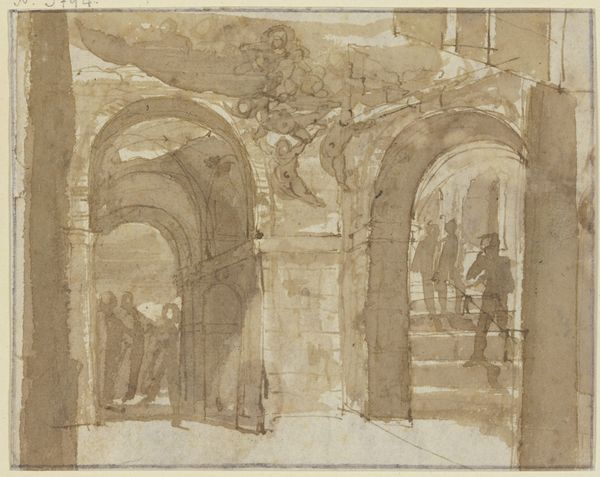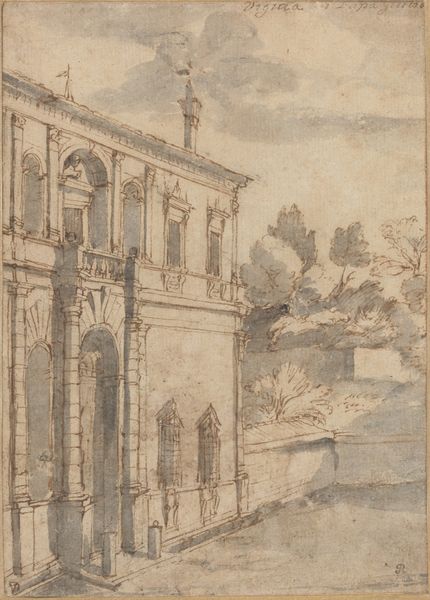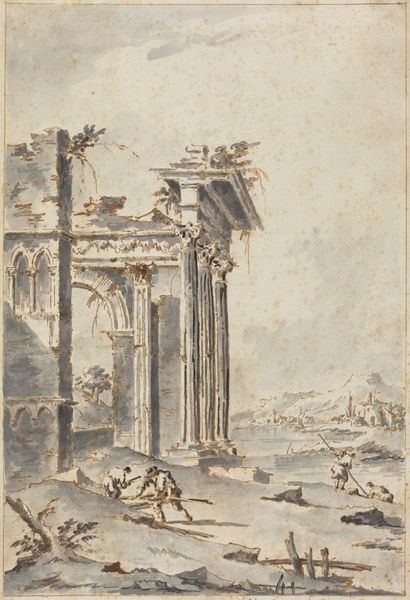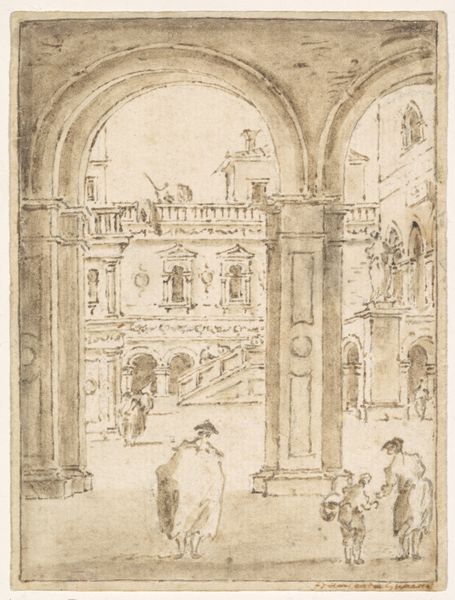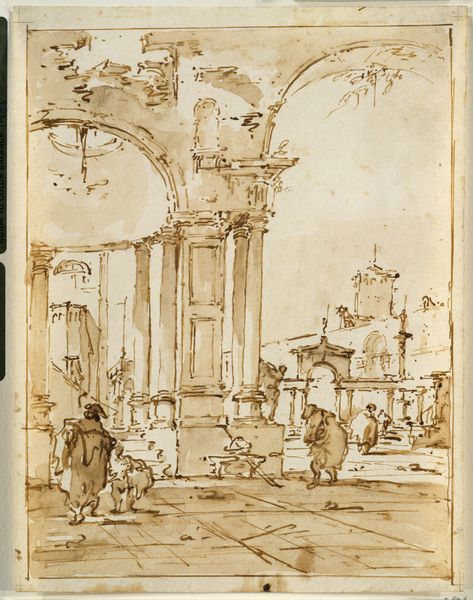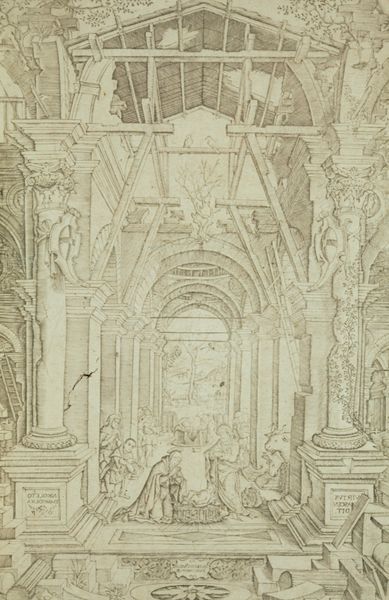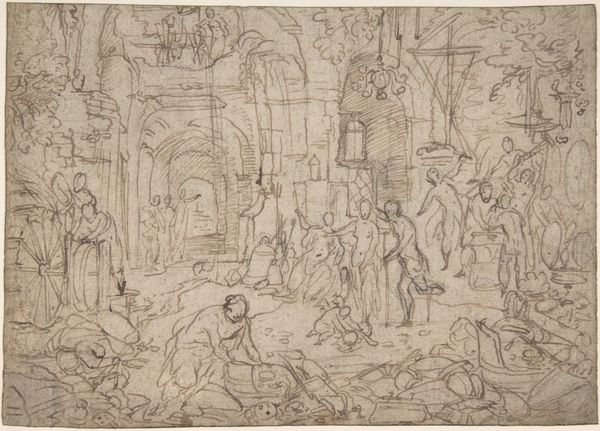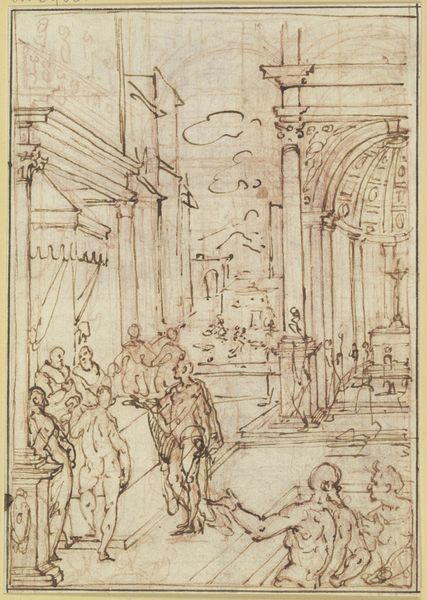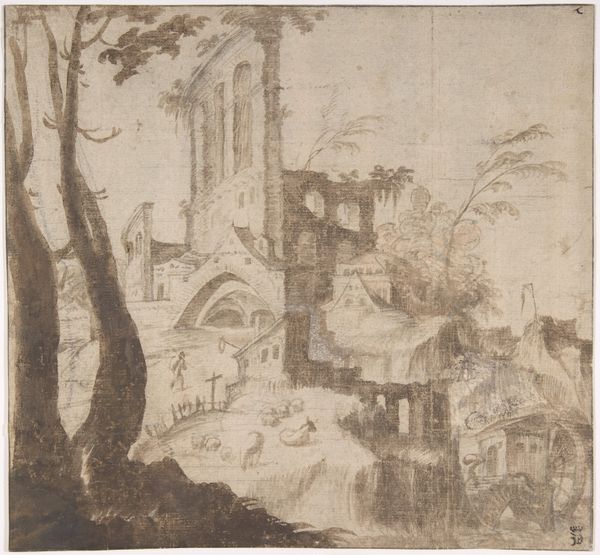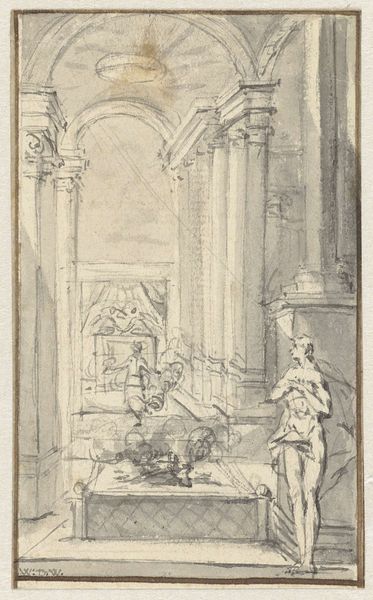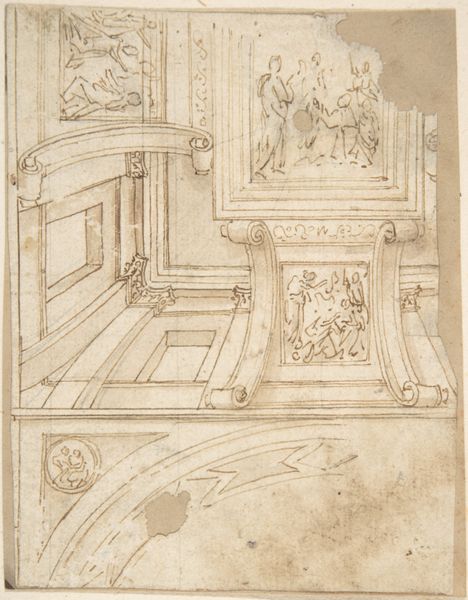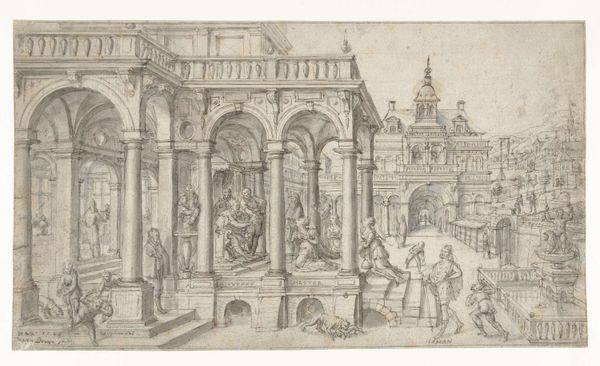
drawing, print, etching, paper, ink, pen
#
drawing
# print
#
etching
#
landscape
#
etching
#
paper
#
romanesque
#
ink
#
pen
#
cityscape
#
history-painting
Dimensions: 117 × 100 mm
Copyright: Public Domain
Curator: Giovanni Paolo Panini’s "Roman Ruins and Two Figures," medium unspecified, presents us with a melancholic tableau. The figures seem dwarfed by the immensity and decay surrounding them. Editor: I'm immediately struck by the texture achieved with pen, ink, and etching on paper; the way the light interacts with the crumbling stonework suggests a palpable weight to the ruins. Curator: Absolutely, that texture is crucial. It speaks volumes about power and history. Here, Panini, consciously or unconsciously, participates in a centuries-long tradition of critiquing the destructive forces of unchecked political power through art. Notice how the figures—probably representing educated Grand Tourists—are diminutive against the ruinous backdrop. Are they awestruck by history, or confronted by mortality? Editor: The physical making of this work further engages that mortality—think of the labor inherent in grinding pigment for ink, the precision of the etching, the repetitive gesture of hatching that builds these grand arches, slowly but surely marking the passing of human involvement over a surface. All that just to capture this moment of ruin. Curator: And think about the politics of ruin. Whose stories are deemed worthy of monumental architecture in the first place, and whose labor created it? That arched ceiling surely didn't build itself, nor did those now-fallen columns erect themselves; their purpose in Rome as instruments of governance—a space from which legal statutes were promulgated, edicts handed down. Its very disintegration points to an undoing, a fallibility to Empire as a structure in need of consistent reproduction through violent hierarchies. Editor: It’s worth investigating where that stone originated, its purpose after this building crumbled. Artworks such as these drawings become essential cultural commodities in understanding value – where objects come from, how they're altered over time. Each mark on the paper also tracks a series of physical and material actions by different hands at different historical moments. Curator: By placing these figures—inherently gendered, most likely upper-class men and therefore beneficiaries of systemic violence—into dialogue with their own crumbling past, the artist suggests both the seductiveness and the limitations of cultural authority. Editor: Considering those limitations through its material transformation and inevitable disintegration certainly leaves a resonating impact, don’t you think? Curator: Indeed, a chilling, essential reminder that power is temporal, and destruction is forever shaping our human stories.
Comments
No comments
Be the first to comment and join the conversation on the ultimate creative platform.
